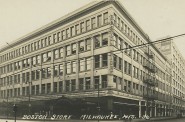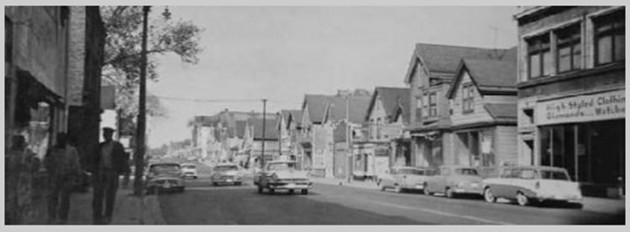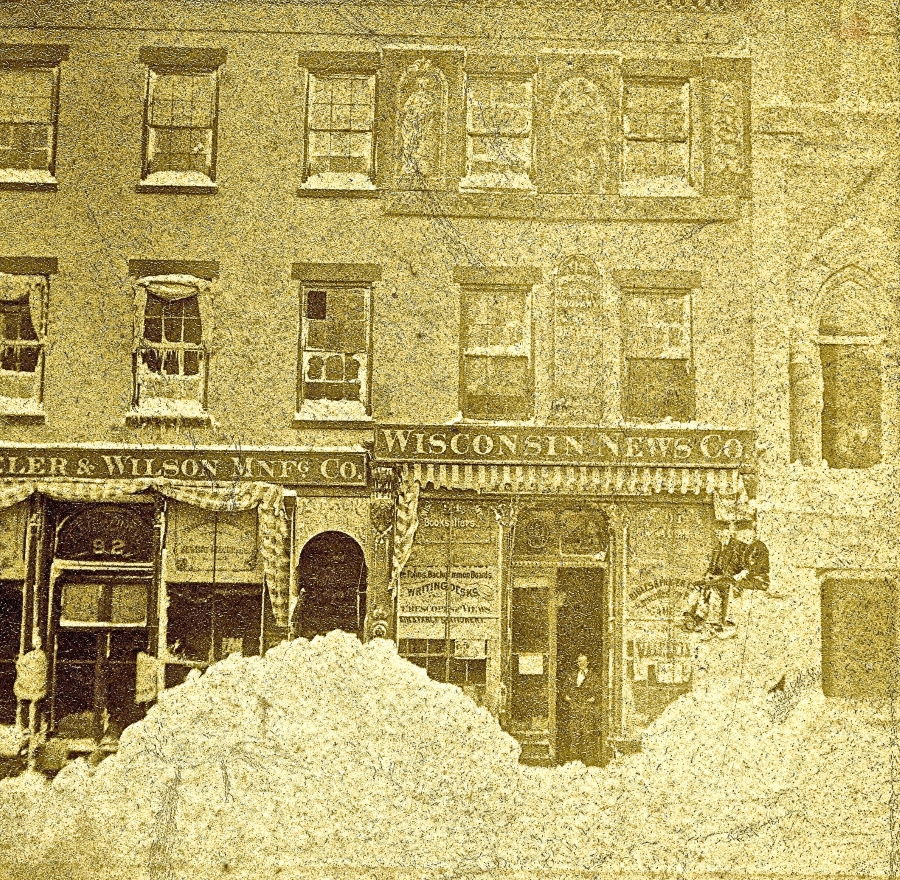The Great Storm of 1871
The city got buried in snow in 1871 and a well-known photographer was there to record it.
If winter gets annoying just imagine what it was like in the 1870s, before the era of cars, trucks and any sort of mechanical snow removal equipment. This is a photograph of the “Great Storm of 1871,” taken by photographer E. D. Bangs. This view is of the north side of Wisconsin St. (now Avenue), between Water St. and Broadway. The Wisconsin News shop is visible as is Wheeler & Wilson, a dealer in sewing machines. Bangs did not have to travel very far from his studio for this photograph. Wheeler & Wilson was at 92 Wisconsin St. Bangs’ studio was at 86 Wisconsin St.
Bangs was described as being “among the prominent artists” and “one of the pioneers of in this business in this city” by the book, Industrial History of Milwaukee (1886), by Elmer Epenetus Barton. Bangs was born in New York in 1840 and moved to Milwaukee in 1849 (many of the city’s early settlers came from New York). He served in the Civil War and later built his photography business. His photographs were “unexcelled in quality and style of work” and his reputation “second to none in this section of the country,” Barton wrote.
There doesn’t seem to be a record of just how many inches of snow fell in the Great Storm, and it would appear that a storm that came ten years later probably surpassed it: A blizzard that hit southern and central Wisconsin on March 2-4, 1881, caused drifts 20 feet high and dumped 28.5 inches of snow on Milwaukee. Still, the 1871 storm was notable enough to earn its name as a “Great” one.
Site Nowadays
Jeff Beutner is a collector of photographs, postcards and stereoviews of old Milwaukee. This column features these images, with historical commentary by Beutner.
Yesterday's Milwaukee
-
When Boston Store Was Big
 Apr 18th, 2018 by Jeff Beutner
Apr 18th, 2018 by Jeff Beutner
-
Sherman Park Has Been a Melting Pot
 Aug 25th, 2017 by Jill Florence Lackey, PhD
Aug 25th, 2017 by Jill Florence Lackey, PhD
-
The Rise and Fall of Bronzeville
 Aug 5th, 2017 by Jill Florence Lackey, PhD
Aug 5th, 2017 by Jill Florence Lackey, PhD























“just imagine what it was like in the 1870s, before the era of cars, trucks and any sort of mechanical snow removal equipment.”
In the eras of cheap labor, plenty of horse power and few parking obstructions, the snow removal was probably very efficient. In fact the photo doesn’t show a disaster, but the organized aftermath of the storm. In Milwaukee’s urban residential areas where almost every intersection had one or more taverns, the other corner/s vey likey had either a bakery or mom & pop grocery store; the average citizen had more options when facing a situation like the “Great Storm of 1871”.
Well said Gary. That’s something I’ve never really thought of until now. That the sprawly developement that has been encouraged can make a random heavy snow fall into a disaster. Another example of how costly modern development really is to people and govmnts.